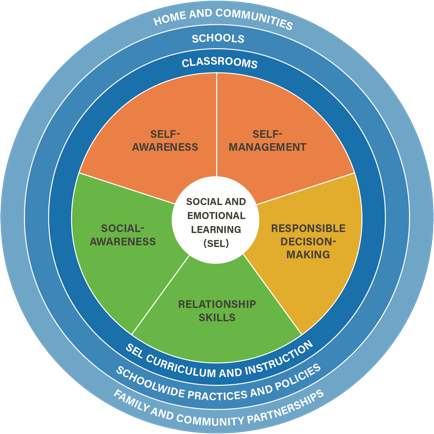
Secret #1: Most coaches have no idea what SEL is or how to integrate it in their program
Social and Emotional Learning is the core of the new BC School Curriculum and should be an important part of all youth sports programs (BC GOV). It’s aim is to help everyone, but in this case, our kids, develop the ability “to resolve conflicts…to show empathy for others, and to make responsible decisions” (Schonert-Reichl, 2017).
In a time where the majority of sports are increasingly competitive, these true life skills give way to an emphasis on winning, dribbling, shooting, scoring, etc.
Let’s be clear that nothing is wrong with teaching the skills of the sport. Kids gain confidence when they find success so of course need to practice dribbling and shooting.
But don’t we enroll our kids in sports for a higher purpose than them finding on-field / ice / court success? Don’t we want them to learn values and skills that will outlast their time playing the sport itself?
It’s time organizations and coaches give a fresh look at their curriculum and how they’ll specifically integrate situations where their athletes can learn how to resolve conflicts, show empathy, think critically, and more.
Secret #2: Your kids don’t need to specialize in their sport
It’s an easy mistake to make with the whole “10,000 hours” paradigm we live in. Plus, coaches and programs want to lock your child (Or as they might say, “the next Olympic star”) into their sport for obvious reasons ($$$) with the rationale that kids need to focus on building up the specific skills of the sport. So why isn’t this the case?
The first reason is that the chance of injury skyrockets. According to Reuters, in a study with a total of about 5,600 athletes age 18 or younger, “youth who specialized the most were 81 percent more likely to experience an overuse injury” (Rapaport, 2018).
The second reason is that the top athletes in the world were multi-sport athletes as a child. The main reason is that kids are able to develop complementary skills for their eventual primary sport while avoiding the burnout of doing just one sport. A great example is how Wisconsin College’s Basketball Team (NCAA Division 1) uses Ultimate Frisbee as a cross-sport in their off-season to develop cardio and refine hand-eye coordination.
Secret #3: Scrimmages aren’t the only way to simulate game play
Have you ever watched your child’s sport practice? Does everyone touch the ball / puck / object equally in the scrimmage that coaches normally run at the end of practice? If not, why is that? Aren’t scrimmages a time when everyone can apply what they learned in the earlier drills?
If you answered yes, you are correct. But frankly, most coaches and sport programs aren’t creative enough to think of a way to simulate game play while also involving multiple objects, making sure everyone is getting a fair chance to apply their skills in a game-like scenario.
One of our most popular games is called Monkey, which is essentially Ultimate Frisbee + Capture the Flag. Depending on the number of players (we’ve played with 100 people before), there are anywhere from 2 – 20 frisbees at a time. This allows for mini-games to develop and maximizes the touches for all players. Best of all, they are using the exact same skills they would be using in a real Ultimate scrimmage (passing and moving, pivoting, going towards an endzone).
Secret #4: (Bonus)
Did you know 122 Elementary Schools in Greater Vancouver are already playing Ultimate Frisbee?
It’s no surprise to us. It’s a co-ed sport that is self – refereed, so it teaches kids SEL skills such as conflict resolution and personal accountability.
Elevate Ultimate taught Ultimate Frisbee to over 5,000 athletes in 2019 and wants to double that in 2020!
